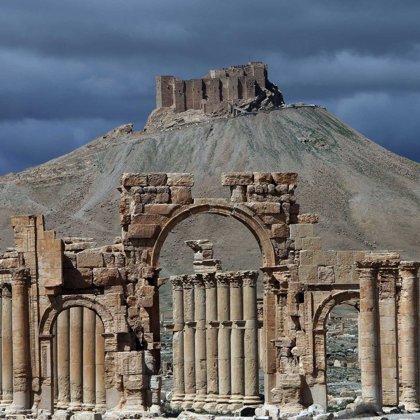SYRIA WAS UNDER EMERGENCY LAWS FOR A STAGGERING PERIOD OF 48 YEARS FROM 1963 - 2011.SYRIA,HISTORICAL BACKGROUND ,SINCE BEFORE 2000 BC ,SYRIA HAS BEEN AN INTEGRAL PART OF THE SEAT OF GOVERNMENT FOR ,POWERFUL EMPIRES.AND STATE IDENTITY IN SYRIAN REPUBLIC.

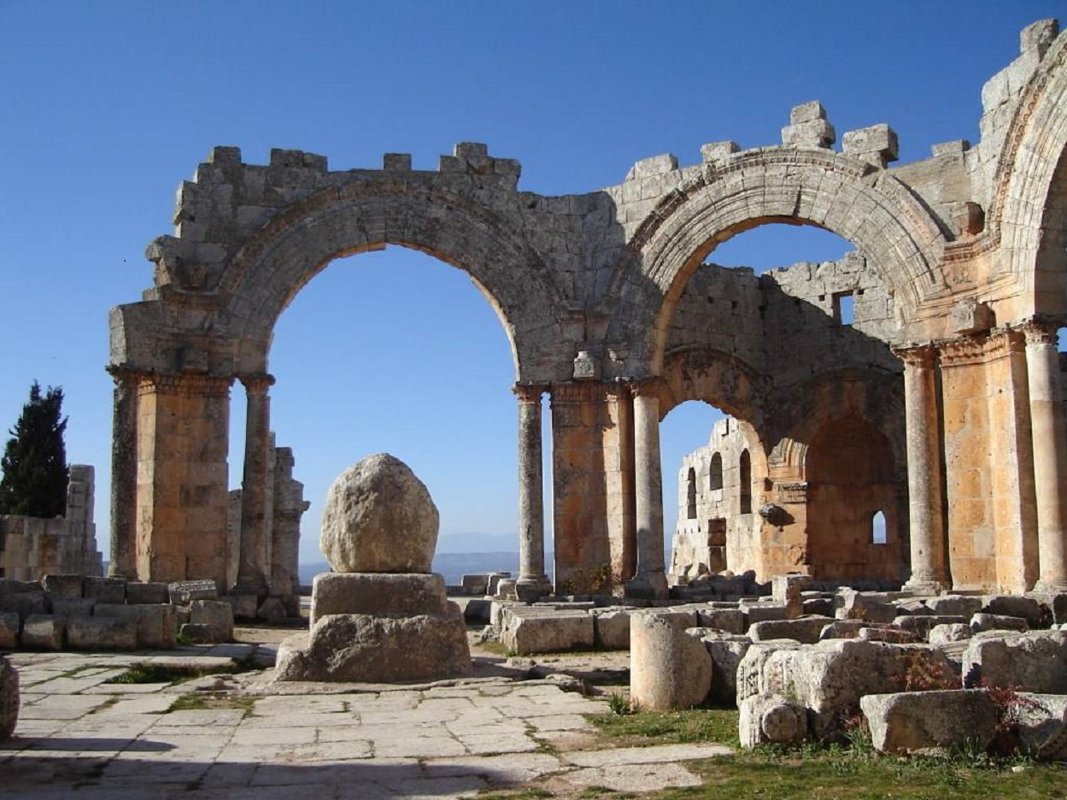 Known as the Dead Cities, or Ancient Villages of Northern Syria, this incredible collection of 700 abandoned settlements lies in the Al-Bara region.In the northwest of Syria, between the cities of Aleppo and Idlib, lies on of the largest concentration of archaeological sites in the world, the Dead Cities of Syria. More than 700 settlements grouped in 8 archaeological parts provide an insight into rural life in Late Antiquity and during the Byzantine period.The well preserved remains include houses, churches, pagan temples, cisterns and bathhouses. Located along major routes, these cities were prosperous between the 1st and 7th centuries. After the Arab conquest, the trade routes changed and the cities lost the majority of the business. They were finally abandoned between the 8th and 10th centuries as settlers left for more prosperous lands. Before the Syrian Civil War, these abandoned cities were often visited by tourists although the Syrian government had done little to restore the ancient ruins. In 2011.
Known as the Dead Cities, or Ancient Villages of Northern Syria, this incredible collection of 700 abandoned settlements lies in the Al-Bara region.In the northwest of Syria, between the cities of Aleppo and Idlib, lies on of the largest concentration of archaeological sites in the world, the Dead Cities of Syria. More than 700 settlements grouped in 8 archaeological parts provide an insight into rural life in Late Antiquity and during the Byzantine period.The well preserved remains include houses, churches, pagan temples, cisterns and bathhouses. Located along major routes, these cities were prosperous between the 1st and 7th centuries. After the Arab conquest, the trade routes changed and the cities lost the majority of the business. They were finally abandoned between the 8th and 10th centuries as settlers left for more prosperous lands. Before the Syrian Civil War, these abandoned cities were often visited by tourists although the Syrian government had done little to restore the ancient ruins. In 2011.
Syrian Arab Republic (Suriyah). Capital: Dam ascus (population estim ated at 5 m illion ). Other Ma jor Cities : Aleppo (4.5 m illion ), Hom s (1.8 m illion ), Ham ah (1.6 m illion ), Al Hasakah (1. 3 m illion ), Idlib (1.2 m illion), and Latakia (1 m illion). Independence: Syrians celebrate their independence on April 17, known as Evacuation Day, in comme moration of the departure of French forces in 1946.Since before 2000 BC, Syria has been an integral part of, or the seat of government for, powerful empires. The struggle among various indigenous groups as well as invading foreigners resulted in cultural enrichment and significant contributions to civilization, despite political upheaval or turmoil. The ancient city of Ebla existed at the center of an expansive empire around 2400 B.C. The chief site, unearthed in the vicinity of Aleppo in the 1970s, contained tablets providing evidence of a sophisticated and powerful indigenous Syrian empire that was involved with, and probably controlled, a vast commercial network linking Anatolia (today part of Turkey), Mesopotamia (an ancient region of southwestern Asia in present-day Iraq), Egypt, and the Aegean and Syrian coasts. The language of Ebla is believed to be the oldest Semitic language, and the extensive writings of the Ebla culture are proof of a brilliant culture that rivals those of the Mesopotamians and ancient Egyptians.After the King of Akkad (Mesopotamia) destroyed Ebla, Amorites ruled the region until their power was eclipsed in 1600 B.C. by the Egyptians. The following centuries saw Syria ruled by a succession of Canaanites, Phoenicians, Hebrews, Aramaeans, Assyrians, Babylonians, Persians, Greeks, Seleucids, Romans, Nabataeans, Byzantines, Muslim Arabs, European Christian Crusaders, Ottoman Turks, Western Allied forces, and the French. Although Syria has absorbed the legacies of these many and varied cultures, the very existence of this string of foreign dominating powers exemplifies the political, economic, and religious importance of Syria’s strategic location.Highlights of early Syrian history include the impact made by such dominant powers as the Phoenicians, Aramaeans, and Greek, Roman, and Byzantine Empires. During the second millennium B.C., the seafaring Phoenicians established a trade network among independent city-states and developed the alphabet. The Aramaeans, overland merchants who had settled in Greater Syria at the end of the thirteenth century B.C., opened trade to southwestern Asia, and their capital at Damascus became a city of immense wealth and influence. Aramaic ultimately displaced Hebrew as the vernacular in Greater Syria and became the language of commerce throughout the Middle East. Beginning in 333 B.C., with the conquest of the Persian Empire, Alexander the Great and his successors brought Western ideas and institutions to Syria. Following Alexander’s death in 323 B.C., control of Greater Syria passed to the Seleucids, who ruled the Kingdom of Syria from their capital at Damascus for three centuries. In the first centuries A.D., Roman rule saw the advent of Christianity in Syria. Paul, considered to be the founder of Christianity as a distinct religion, was converted on the road to Damascus and established the first organized Christian Church at Antioch during the first century.Syria remained at the center of the new Christian religion until the seventh century, when the area succumbed to Muslim Arab rule. Prior to the Arab invasion, Byzantine oppression had catalyzed a Syrian intellectual and religious revolt, creating a Syrian national consciousness. The Muslim Arab conquest in A.D. 635 was perceived as a liberating force from the persecution of Byzantine rule, to which Syria had been subjected since A.D. 324. But with Damascus as the seat of the Islamic Umayyad Empire, which extended as far as Spain and India between 661 and 750, most Syrians became Muslim, and Arabic replaced Aramaic. Syrian prestige and power declined after 750 when the Abbasids conquered the Umayyads and established a caliphate in Baghdad. Syria then became a mere province within an empire.Muslim control of Christian holy places was elemental in provoking the first major Western colonial venture in the Middle East, when European Crusaders established the principalities of Edessa, Antioch, Tripoli, and the Latin Kingdom of Jerusalem between 1097 and 1144. The ensuing jihad against the foreign occupation was a unifying force for Arabs in Greater Syria until the area became a province of the Ottoman Empire in 1516. Syria’s economy did not flourish under Ottoman rule, which lasted for 400 years. Yet, Syria continued to attract European traders and with them Western missionaries, teachers, scientists, and tourists whose governments began to agitate for certain rights in the region, including the right to protect Christians.
The Dead Cities
Known as the Dead Cities, or Ancient Villages of Northern Syria, this incredible collection of 700 abandoned settlements lies in the Al-Bara region, among the hills between the Aleppo-Hama Highway and the Orontes River. Ranging from single monuments to almost-complete villages, these ghostly sites date back before the fifth century CE. They are situated in an area known as Belus Massif, and contain numerous remains of Christian Byzantine architecture.Approximately 20 - 40 km in width, the zone spreads over a much greater length covering most of 140 km between Cyrrhus in the north and Apamea in the south.It contains one of the great archaeological puzzles of this century. Nonetheless this area provides a rich source of insight into Roman and Byzantine rural life, since it lived along the first ten centuries AD on fertile lands.Extending over an area of 6 Km sq. is the dead city of Al Bara, often considered one of the most important and beautiful in Syria. It is situated 35 Km south of Idleb on the western slopes of Al Zawiye Mountain and is at a height of 700 meters above sea level.The importance of the settlement resulted from its location between the two major sections of Jebel Zawiye, the trough in which it is located forming a north/south corridor essential for internal access. The settlement of Al Bara only began in the fourth century as a Byzantium state.Settlement in Al Bara began in the 4th century as a center for the production of olive oil and wine. It expanded in the 5th and 6th centuries to become one of the largest of the Byzantine cities in the area, and became the processing center for many of the surrounding villages. The building style at Al Bara gives an idea of the prosperity it enjoyed, and by the end of the Byzantine era it included 5 churches that are still recognizable and pyramid-roofed tombs that are interesting to see.It was left alone during the Muslim conquests of Syria and was taken over by the Crusaders in 1098 by the Count of Toulouse who replaced the presiding Bishop with a Latin one. In 1123 it fell to the Muslims who strengthened the defensive system by building Qalaat Abu Sufian.The main vestiges at Al lude the pyramidal roofed tombs that are carefully engraved with acanthus leave decorations, the five churches dating back to the 5th and 6th centuries and are beautiful examples of Byzantine basilicas, and the Muslim fort of Qalaat Abu Sufian.One of the most famous dead cities in the region is that of Serjila. It is located about 7 km from Al Bara, and is famous for the beautiful remains of Roman baths.Situated in a natural basin at the bottom of the Eastern slope of the Ariha Mountain, it is the remains of a complete Byzantine settlement including remains of houses, baths, tombs and a church. The existence of baths in this region shows how prosperous this region had been. This region was rich in vine and it was a center for its cultivation and the production of wine.The floor of these baths dates back to 473, and is some of the most preserved in Syria. A large mosaic was found in the main meeting hall of the baths, by an American expedition and has since been destroyed.The church at Serjila dates back to 372, although begun a little earlier and is considered one of the oldest in the region. Also found at Serjila are the extensive remains of houses, and the terraces on the slopes around it, where stones used to keep the vine in place, can still be seen.
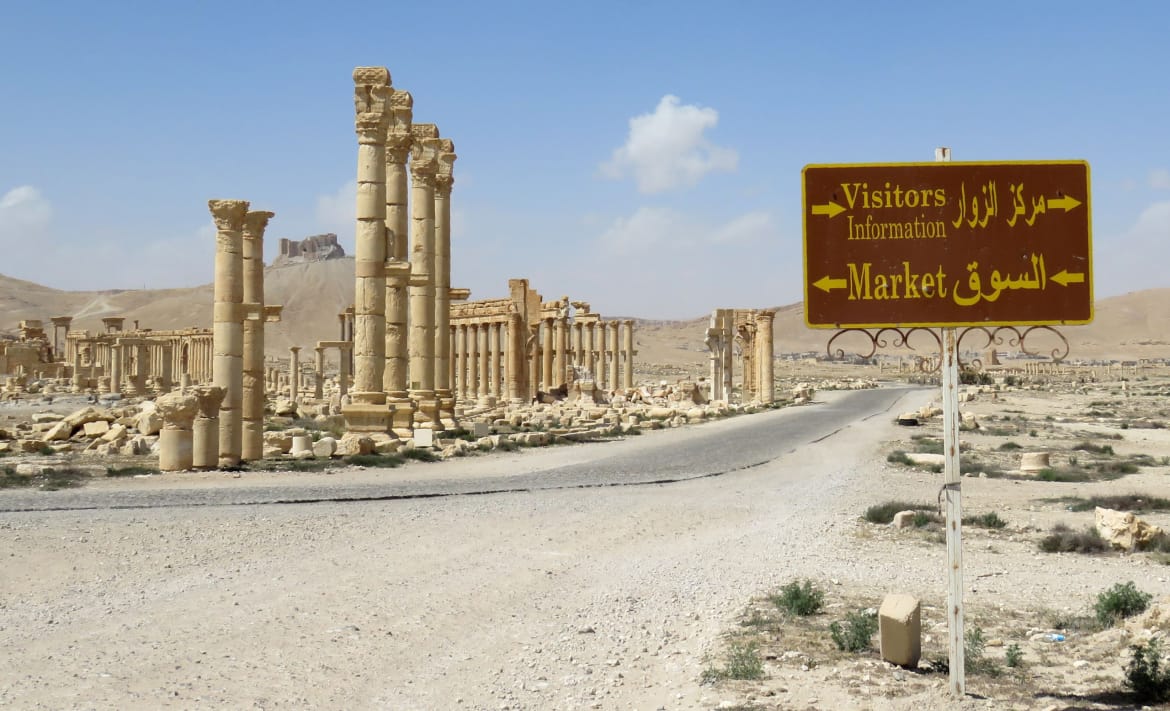
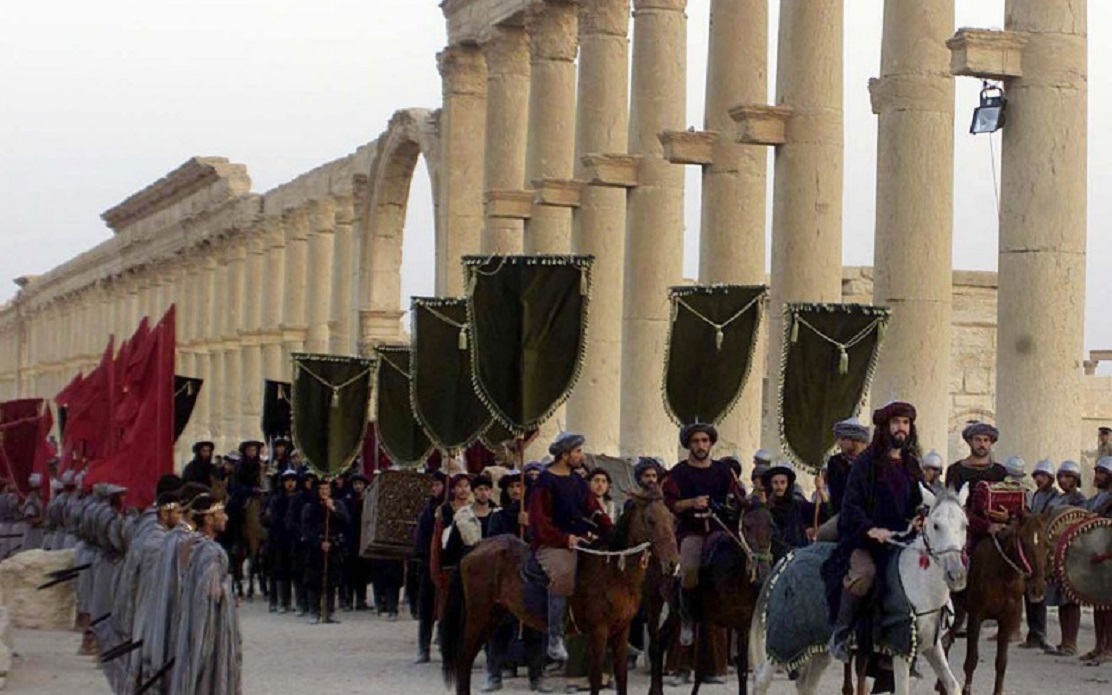
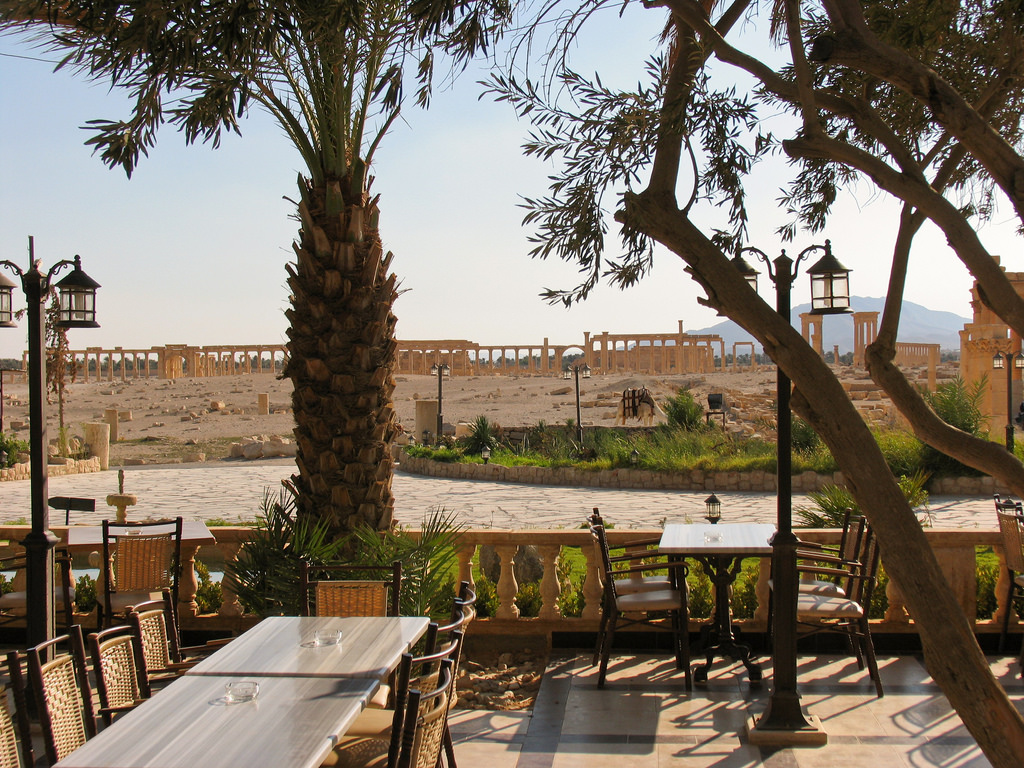 Palmyra, before the war. Much of the city has been destroyed.The ruins of an ancient city 2,000-year-old ruins in the Syrian desert face destruction by ISIS. That have withstood centuries of conflict in the Syrian desert are now facing their greatest threat yet: the militants of the Islamic State.Activists, officials and citizens of the city say ISIS has launched a prolonged assault on Palmyra, an "oasis in the desert" north of Damascus.
Palmyra, before the war. Much of the city has been destroyed.The ruins of an ancient city 2,000-year-old ruins in the Syrian desert face destruction by ISIS. That have withstood centuries of conflict in the Syrian desert are now facing their greatest threat yet: the militants of the Islamic State.Activists, officials and citizens of the city say ISIS has launched a prolonged assault on Palmyra, an "oasis in the desert" north of Damascus.
The Palmyrene Empire
Known as the "Venice of the Sands", the ancient Syrian city of Palmyra was a wealthy luxury caravan center from the 1st to the 3rd centuries. Archaeological finds date back to the Neolithic era, 2nd millennium BC, when the city was first documented as a caravan stop for travellers crossing the Syrian Desert.Located at the edge of an oasis of gardens, Palmyra was a part of the Seleucid Empire and prospered after its incorporation into the Roman Empire during the first century. In 270 AD, Roman Arabia was annexed under the tutelage of Zenobia, the Queen of the newly formed Palmyrene Empire of Syria. The Queen's famous revolt against the Roman Empire would only last a few years of prosperity before reconquest by Rome was accomplished sometime between 272-273 AD – effectively disestablishing the Palmyrene Empire.The entitlement of Ancient Palmyra was turbulently disputed throughout the many millenniums and centuries of its existence. After 1958, the site was completely excavated by the Syrian Directorate-General of Antiquities, and Polish expeditions led by many archaeologists, including Kazimierz Michałowski (until 1980) and Michael Gawlikowski (until 2011), concentrated efforts on discovering and restoring the ancient ruins. In 1980, the historic site was declared a World Heritage Site by the UNESCO.In 2015, Palmyra came under the control of the militant group Islamic State of Iraq and Syria (ISIS), which later destroyed the ancient ruins' priceless architecture and art. The physical history may be gone, but the beautiful photography and its documentation by numerous expeditions will never be erased. In response to the destruction, Creative Commons started an online repository of three-dimensional images published into the public domain to digitally reconstruct Palmyra.Tadmor is mentioned in texts discovered at Mari dating back to the 2nd millennium BC. Early rulers included the Assyrians and Persians, before the settlement was incorporated into the realm of the Seleucids, the empire founded by a former general of Alexander the Great. From an early time Tadmor was an indispensable staging post for caravans travelling between the Mediterranean, Mesopotamia and Arabia. It was also an important link on the old Silk Route from China and India to Europe, with the city prospering greatly by levying heavy tolls on the caravans.As the Romans expanded their frontiers during the 1st and early 2nd centuries AD to occupy the eastern Mediterranean shores, the Seleucid dynasty failed. Tadmor became stranded between the Latin realms to the west and those of the Parthians to the east. The oasis used this situation to its advantage, keeping the east–west trade routes open and taking the role of middleman between the two clashing superpowers. The influence of Rome grew, and the city they dubbed Palmyra (City of Palms) became a tributary of the empire and a buffer against rivals to the east. The Palmyrenes were permitted to retain considerable independence, profiting also from rerouted trade following the defeat of the Petra-based Nabataeans by Rome.The emperor Hadrian visited in AD 129 and declared Palmyra a ‘free city’, allowing it to set and collect its own taxes. In 212, under the emperor Caracalla (himself born of a Syrian mother), Palmyra became a Roman colony. In this way, its citizens obtained equal rights with those of Rome and exemption from paying imperial taxes. Further wealth followed and Palmyra spent lavishly, enlarging its great colonnaded avenue and building more and larger temples.As internal power struggles weakened Rome, the Palmyrenes strengthened their independence. A local noble, Odainat, defeated the army of one of Rome’s long-standing rivals, the Sassanians, and proclaimed himself ‘king’. In 256 the emperor Valerian bestowed upon Odainat the title of ‘Corrector of the East’ and put all Roman forces in the region under his command.The most glorious episode in Palmyra’s history – which also led to the city’s subsequent rapid downfall – began when Odainat was assassinated in 267. His second wife, Zenobia, took over in the name of their young son, Vabalathus. Rome refused to recognise this arrangement, particularly as Zenobia was suspected of involvement in her husband’s death. The emperor dispatched an army to deal with the rebel queen. Zenobia met the Roman force in battle and defeated it. She then led her army against the garrison at Bosra, then the capital of the Province of Arabia, and successfully invaded Egypt.With all of Syria and Palestine and part of Egypt under her control, Zenobia declared her independence from Rome and had coins minted in Alexandria bearing her image and that of her son, who assumed the title of Augustus, or emperor.
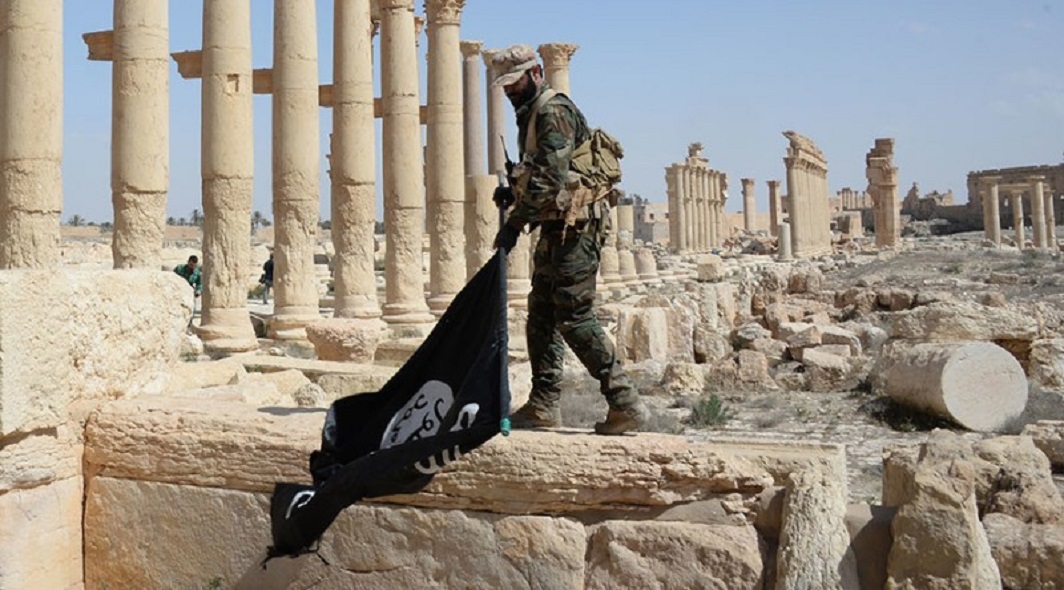
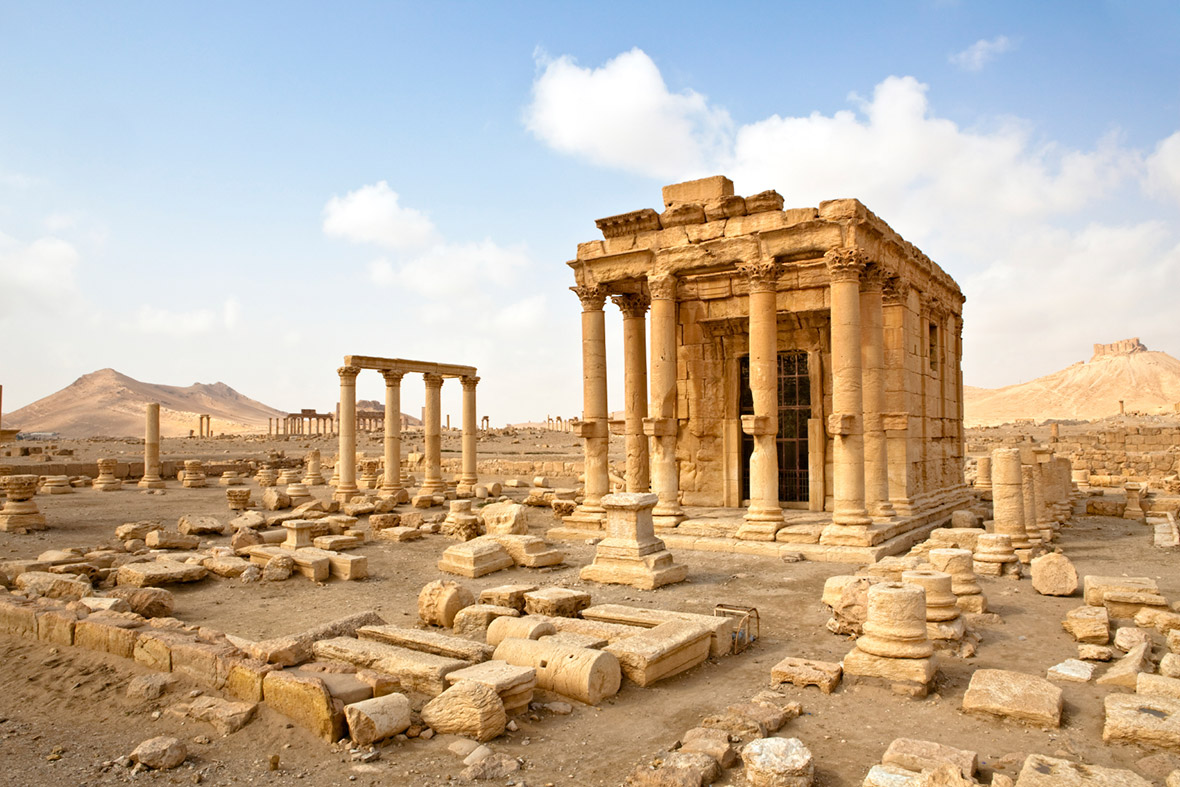
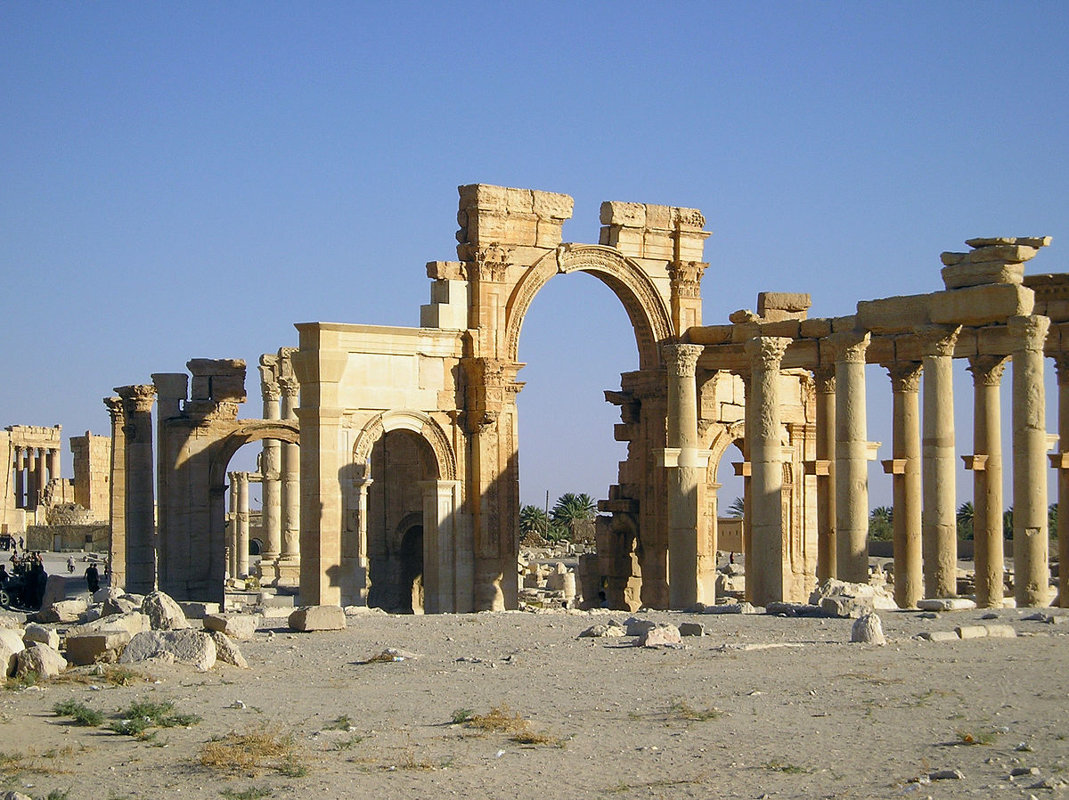 The ancient city of Palmyra lies in ruins, which is saying something, since it was already a ruin to begin with (not originally, of course, but you take my meaning). Major damage has been done to the ancient structures at this UNESCO World Heritage site, casualties of the Islamic State’s ‘cultural genocide’, a campaign to annihilate Syria’s cultural heritage in order to demoralise the populace and attract attention to their cause. The Temple of Bel has been reduced to rubble, leaving only an empty doorway in its place. The Arch of Triumph was eerily cleaved in two, as if severed by a blade.
The ancient city of Palmyra lies in ruins, which is saying something, since it was already a ruin to begin with (not originally, of course, but you take my meaning). Major damage has been done to the ancient structures at this UNESCO World Heritage site, casualties of the Islamic State’s ‘cultural genocide’, a campaign to annihilate Syria’s cultural heritage in order to demoralise the populace and attract attention to their cause. The Temple of Bel has been reduced to rubble, leaving only an empty doorway in its place. The Arch of Triumph was eerily cleaved in two, as if severed by a blade.
Present-day Syria is only a small portion of the ancient geographical Syrian landmass, a region situated at the eastern end of the Mediterranean Sea from which Western powers created the contemporary states of Syria, Lebanon, Jordan, and Israel in the post-Ottoman era of the early twentieth century. Greater Syria, as historians and political scientists often refer to this area, is a region connecting three continents, simultaneously cursed and blessed as a crossroads for commerce and a battleground for the political destinies of dynasties and empires. Exploited politically, Greater Syria also has benefited immeasurably from the cultural diversity of the people who came to claim parts or all of it, and who remained to contribute to the remarkable spiritual and intellectual flowering that characterized Greater Syria’s cultures in the ancient and medieval periods. Throughout history, Greater Syria has been the focal point of a continual dialectic, both intellectual and bellicose, between the Middle East and the West. Today, Syria remains an active participant in the trials and tribulations of a troubled and volatile region.The period between the outbreak of World War I in 1914 and the granting of France’s mandate over Syria by the League of Nations in 1922 was marked by a complicated sequence of events during which Syrians achieved a brief period of independence (1919– 20). However, three forces were at work against Arab nationalism: Britain’s interest in keeping eastern Mesopotamia under its control in order to counter Russian influence and to protect British oil interests; the Jewish interest in Palestine; and France’s determination to remain a power in the Middle East. Ultimately, Syria and Lebanon were placed under French influence, and Transjordan and Iraq, under British mandate. The termination of Syria’s brief experience with independence left a lasting bitterness against the West and a deep-seated determination to reunite Arabs in one state. This quest was the primary basis for modern Arab nationalism.The period of French Mandate brought nearly every feature of Syrian life under French control. This oppressive atmosphere mobilized educated wealthy Muslims against the French. Among their grievances were the suppression of newspapers, political activity, and civil rights; the division of Greater Syria into multiple political units; and French reluctance to frame a constitution for Syria that would provide for eventual sovereignty, which the League of Nations had mandated. Only in the wake of a widespread revolt instigated by the Druze minority in 1925 did the French military government begin to move toward Syrian autonomy. Despite French opposition, the Soviet Union (today Russia) and the United States granted Syria and Lebanon recognition as sovereign states in 1944, with British recognition following a year later. These Allied nations pressured France to leave Syria, but it was not until a United Nations resolution in February 1946 ordering France to evacuate that Syrians finally attained sovereignty. By April 15, 1946, all French troops had left Syrian soil.Under the subsequent French colonial rule, the colonizers first created separate mini-statelets of these Syrian minorities, but when that policy failed, they reversed into forced unification of Syria’s diverse parts (apart from Lebanon), through a stratagem of imposing the French language instead of Arabic; French law instead of the Ottoman law and mores; and of promoting Christianity in order to undercut Islam. Inevitably, this created the pushback that gave Syria its characteristic suspicion of foreign intervention and its determination to recover a vision of what it was to be Syrian. (The French “regime-changed” Damascus in 1920, 1925, 1926, and 1945, and imposed martial law during most of the pauses in between the coups).French diplomat Francois George-Picot, who along with British colonial officer Mark Sykes drew lines across a Middle East map of the Ottoman Empire after World War I, carving out states with boundaries that are nearly the same as they are today.But the nationalism, which the French repression had provoked into life, pulled in two different directions: the Muslim Brotherhood, the major Islamic movement, wanted to grasp Syria as a Sunni Islamic state, while, in contrast, the more Westernized urban élites wanted to “take” Syria – as not exactly a separate nation-state – but more a part of the whole Arab world, and to be domestically organized as a unified, secular, and at least partly Westernized state.As Patrick Seale noted in The Struggle for Syria: “Above all, [for the secular nationalists], disunity had to be overcome. Their answer was to try to bridge the gaps between rich and poor through a modified version of socialism, and between Muslims and minorities through a modified concept of Islam. Islam, in their view, needed to be considered politically not as a religion but as a manifestation of the Arab nation.“Thus, the society they wished to create, they proclaimed, should be modern (with, among other things, equality for women), secular (with faith relegated to personal affairs), and defined by a culture of ‘Arabism’ overriding the traditional concepts of ethnicity.”In short, what they sought was the very antithesis of the objectives of the already strong and growing Muslim Brotherhood. And by 1973, in an attempt to square the circle between conservative, assertive Sunnism and the nationalist “soft” Islam, the fatwa (by a Shi’i cleric) asserting Hafez al-Assad to be Shi’i Muslim (rather than heretic as Sunnis viewed all Alawites to be), exploded the situation. (The French brokered constitution required that the head of state be “Muslim”).
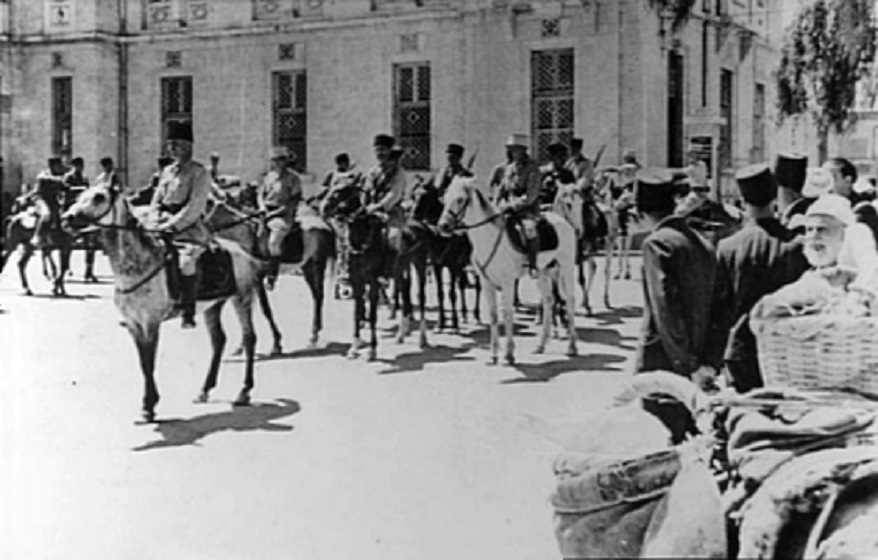 French Circassian Cavalry on their way to making surrender arrangements for the Axis forces. Damascus 1941.Formerly, the French colonial power resorted to religious leaders to teach submission to the people under its domination; today it relies on clerics to overthrow the secular regime of the Syrian Arab Republic.France has shown its gratitude to the third-generation collaborator al-Khatib, whose grandfather collaborated with the colonisers, for his faithful service. Namely the former colonial power has been the first to recognise the “Qatar Coalition” as a legitimate representative of the Syrian people. It is no surprise that the flag of the “opposition” – green, white and black with three stars – is the same as the flag from the time when Syria was under French mandate.
French Circassian Cavalry on their way to making surrender arrangements for the Axis forces. Damascus 1941.Formerly, the French colonial power resorted to religious leaders to teach submission to the people under its domination; today it relies on clerics to overthrow the secular regime of the Syrian Arab Republic.France has shown its gratitude to the third-generation collaborator al-Khatib, whose grandfather collaborated with the colonisers, for his faithful service. Namely the former colonial power has been the first to recognise the “Qatar Coalition” as a legitimate representative of the Syrian people. It is no surprise that the flag of the “opposition” – green, white and black with three stars – is the same as the flag from the time when Syria was under French mandate.
Syria endured decades of strife and turmoil as competing factions fought over control of the country’s government following independence in 1946. This era was one of coups, countercoups, and intermittent civilian rule during which the army maintained a watchful presence in the background. From February 1958 to September 1961, Syria was joined with Egypt in the United Arab Republic (UAR). But growing Syrian dissatisfaction with Egyptian domination resulted in another military coup in Damascus, and Syria seceded from the UAR. Another period of instability ensued, with frequent changes of government. The Arab Socialist Resurrection (Baath) Party (hereafter, Baath Party), with a secular, socialist, Arab nationalist orientation, took decisive control in a March 1963 coup, often referred to as the Baath Revolution. The Baath Party had been active throughout the Middle East since the late 1940s, and a Baath coup had taken place in Iraq one month prior to the Baath take-over in Syria.Factionalism continued within the Baathist regime until the assumption of power by then Minister of Defense Lieutenant General Hafiz al Assad following a bloodless military coup in November 1970. Internal conflict between the Baath Party’s more moderate military wing and more extremist civilian wing had been exacerbated by external events, including Israel’s defeat of the Syrians and Egyptians in the June 1967 war, as a result of which Syria lost territory in the Golan Heights, as well as Syria’s disastrous intervention on behalf of the Palestine Liberation Organization (PLO) in Jordan in September 1970 (events later dubbed Black September).Assad, approved as president by popular referendum in March 1971, quickly moved to establish an authoritarian regime with power concentrated in his own hands. His thirty- year presidency was characterized by a cult of personality, developed in order to maintain control over a potentially restive population and to provide cohesion and stability to government. The dominance of the Baath Party; the socialist structure of the government and economy; the military underpinning of the regime; the primacy of members of the Alawi sect, to which Asad belonged, in influential military and security positions; and the state of emergency imposed as a result of ongoing conflict with Israel further ensured the regime’s stability. Nevertheless, this approach to government came at a cost. Dissent was harshly eliminated, the most extreme example being the brutal suppression in February 1982 of the Muslim Brotherhood, which objected to the state’s secularism and the influence of the “heretical” Alawis. Moreover, the country’s economy suffered, and progress was hindered by an overstaffed and inefficient public sector run overwhelmingly according to Baath Party dictates.Hafiz al Assad died in 2000 and was promptly succeeded by his son, Bashar al Assad, after the constitution was amended to reduce the mandatory minimum age of the president from 40 to 34. Bashar was then nominated by the Baath Party and elected president in a popular referendum in which he ran unopposed. From the start, the younger Assad appeared to make economic and political reform a focus and a priority of his presidency. He has faced resistance from the old guard, however. After a brief period of relaxation and openness known as the Damascus Spring (July 2000–February 2001), dissent is once again not tolerated in Syria, and it appears that any reforms will be slow in coming. Nevertheless, Assad reportedly is slowly dismantling the old regime by enforcing mandatory retirement and replacing certain high-level administrators with appointments from outside the Baath Party.Syria was under an Emergency Law since 1962, effectively suspending most constitutional protections for citizens. Its President Hafez al-Assad led Syria for nearly 30 years, banning any opposing political party and any opposition candidate in any election. The Syrian government justified the state of emergency to the fact that Syria was in a state of war with Israel. Criticism of the president and his family is banned and the domestic and foreign press are censored. The state exercises strict internet censorship and blocks many global websites with local appeal, including Facebook and YouTube, as well as opposition sites.The popular uprising, taking place in various cities in Syria, began on 26 January 2011. Like other pro-democracy rebellions which have erupted across the Middle East, the protests have taken the form of various types, including marches and hunger strikes. In reacting to the largest uprising to take place in the country for decades, Syrian security forces have killed hundreds of protesters and injured many more. A central element of the Syrian authoritarian structure is the support it receives from a coalition of all minorities. In a typical act of self- preservation the minorities have historically lent support to the regime for any alternatives that would place them at a great disadvantage, physically and economically. Assad’s regime, from the time of Hafez al-Assad till this day, enjoys unwavering support from the minorities for it is viewed as a protector of minority interests in Syria, and the regime itself belongs to a minority.The carefully engineered minority domination in the bureaucracy and the army has ensured that defections remain at a bare minimum. Unlike the fragile regimes of Muammar Gaddafi, Hosseini Mubarak and Ben Ali, the state apparatus and the army have stood by the Syrian regime, mostly for self- preservation purposes. The network of minority domination that exists in Syria is pure genius in that the minorities not only lend protection to the Assad family but to each other as well. It is a typical example of mutual protection. In Libya, for example, the weakened state institutions were exclusive of each other working mostly as separate entities protecting the interests of the ruler, Gaddafi, and of those close to him. Such a system of weak interdependence was bound to fail simply because the state apparatus had no existential stake in protecting the regime once trouble hit the shores of Libya. In Syria the case is exactly to the contrary.

 The Assad family. Hafez al-Assad and his wife, Mrs Anisa Makhlouf. On the back row, from left to right: Maher, Bashar, Basil, Majid, and Bushra al-Assad.Richard Nixon became the first U.S. President to visit Damascus when he met with the Syrian President, Hafez al-Assad, in 1974.
The Assad family. Hafez al-Assad and his wife, Mrs Anisa Makhlouf. On the back row, from left to right: Maher, Bashar, Basil, Majid, and Bushra al-Assad.Richard Nixon became the first U.S. President to visit Damascus when he met with the Syrian President, Hafez al-Assad, in 1974.

